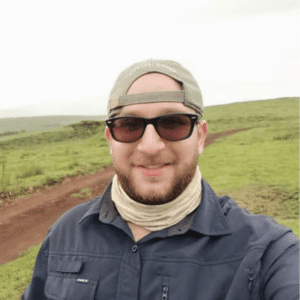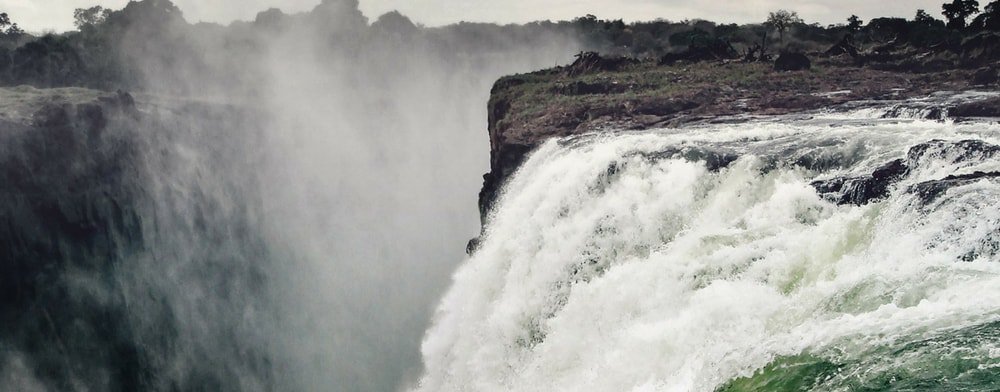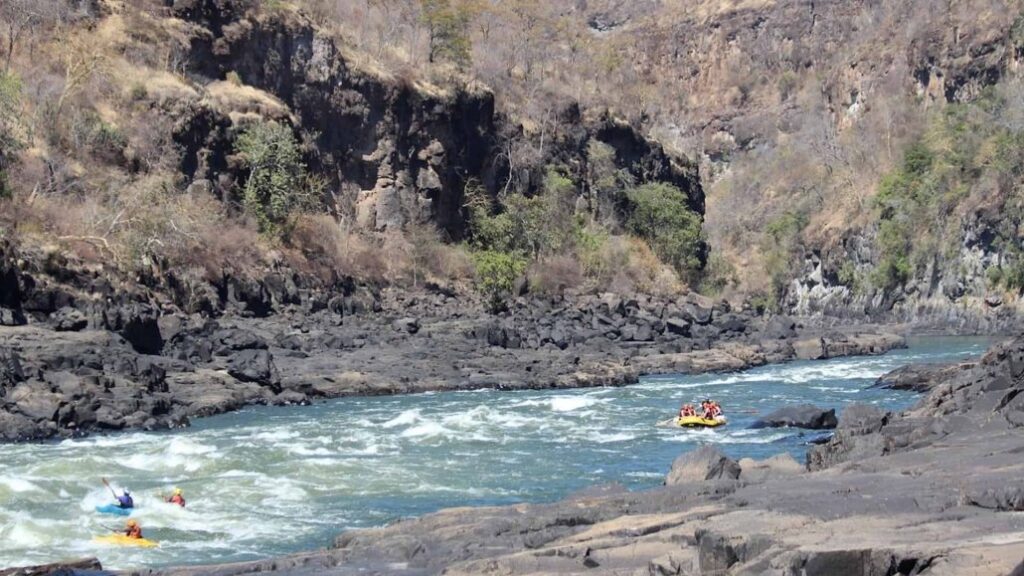
One of the Seven Natural Wonders of the World, Victoria Falls, stretching 1.7 kilometres between Zimbabwe and Zambia, is an unmissable destination for visitors to Eastern Africa. The UNESCO World Heritage Site is the largest waterfall in the world and a truly magnificent site to behold. Stretching the full width of the Zambezi River, this extraordinary single curtain of water plummets down into a 108-metre cleft at a rate of 935 cubic metres per second, sending up a spray that can be seen up to 50 kilometres away. No wonder it’s locally known as the ‘Smoke That Thunders’.

Unchanged since Dr David Livingstone came upon it in 1855, describing it as ‘scenes so wonderful must have been gazed upon by angels in their flight’, Victoria Falls is one of the most beautiful places on Earth, and a magnet for families, honeymooners and thrill seekers alike.
If you’re planning to visit this incredible African destination, here’s the ultimate guide to Victoria Falls.
Victoria Falls lies between Zambia and Zimbabwe and is ‘shared’ between the two countries, creating a natural border. It is part of the Zambezi River, the fourth largest river in Africa.
The falls also divides Zambezi National Park to the north and Victoria Falls National Park to the south.
Lorem ipsum dolor sit amet, consectetur adipiscing elit. Ut elit tellus, luctus nec ullamcorper mattis, pulvinar dapibus leo.
70 metres high on the Zimbabwean side of the falls, this cataract is separated from the rest of the falls by Boaruka Island, whose name means ‘water divider’. The falls were given the name ‘Devil’s Cataract’ by the missionaries who arrived in the area to find local tribes using the island to perform sacrificial ceremonies that the missionaries regarded as ‘devilish’. Today, you’ll find a statue of David Livingstone overlooking the cataract. This is the first of 19 viewing points.
The largest of the falls is 93 metres high and has a peak flow rate of 700,000 cubic metres per minute. The water here doesn’t actually get to the ground. The volume is so great that the water is blown by the violent rising winds and turned into mist, which seems like smoke.
95 metres high, this section of the falls is a fissure that’s been eroded over time to create a horseshoe shape. It’s the first part of the falls to dry up during dry season, and is a popular nesting site for swifts, martins and long-tailed wagtails.
At 108m, Rainbow Falls is the highest of the falls. It is also one of the most dangerous spots to view the falls. However, as the name suggests, it’s here that a rainbow can be seen on clear days. The best time of day to see a rainbow is around 4pm.
101 metres high, the Eastern Cataract is the only section of the falls that lies entirely within Zambia.
There are 19 viewing points along Victoria Falls, 15 of which are on the Zimbabwean side. At Devil’s Cataract on the western side, there are steps that take you down to the first viewing point, called the ‘Chain Walk’. The designated path leads to 16 other viewing points along the edge of the falls.
At the end of the path is Danger Point where you can look across to Zambia. From here you can also follow a path to view Victoria Falls Bridge. It’s also a good spot to view devil-may-care bungee jumpers leaping off the bridge.
Purpose-built to attract tourists to the area, the town itself is worth a visit. It’s a pleasant and safe town to walk around, and the locals are very friendly. Here you’ll find a variety of lively bars and eateries as well as high-quality crafts for sale.
Covering an area of 56,000 hectares, Victoria Falls National Park to the south and Zambezi National Park to the north surround Victoria Falls. Here visitors have the chance to see Cape buffalo, elephant herds, white rhinos, Grant’s zebra and antelope. The Zambezi River is home to the famous Nile crocodiles and hippos, which can be viewed in large numbers along the river.
Within the boundaries of Zambezi National Park is the 2,500-hectare Victoria Falls Private Game Reserve. Here it’s not only possible to see the Big 5, but also the endangered black rhino. Having been re-introduced to the protected area, which is guarded 24 hours a day, these rare animals have been also been de-horned to prevent poaching attacks, and are now increasing in numbers.
Baboons are common around the falls; in fact, they can be aggressive and a nuisance, so visitors are warned against feeding them. Vervet monkeys are another primate common to the area.
The first archaeological signs of human history found around the falls date back three million years. Stone artefacts from the Early, Mid and Late Stone Age have been found in the area. The Stone Age inhabitants were subsequently displaced by Batoka, Matabele and Makolo tribes who, over time, dominated the area.
The first European to see Victoria Falls was Dr David Livingstone, a Scottish missionary and explorer who wanted to find a way to the east coast of Africa. Although he marvelled at the falls, he was annoyed at having his path blocked!
It was the Makolo tribe, whose descendants still live in the area today, that escorted Dr Livingstone in dug out canoes to see the falls in 1855. Livingstone named the falls after the reigning British monarch of the time, Queen Victoria.
But European settlement at the falls didn’t start developing until 1900, when imperialist Cecil Rhodes, with ambitions to build a railway from the Cape to Cairo, commissioned a bridge to be built across the mighty Zambezi River. Rhodes died before the Victoria Falls Bridge was completed in 1905.

The climate of the region falls into two categories:
· Wet Season: November to April
· Dry Season: May to October
The best time to visit depends on what you want to see, do and experience:
· If you want to see the largest volume of water and the falls in its true glory, the best time of year to visit is from February to May, just after the summer rains. However, the rapids are too dangerous for rafting in certain sections, and you won’t be able to swim in the Devil’s Pool at this time of year. Also, expect to get very wet!
· If you want to go on safari, plan to visit in the dry season. June to August is the peak time for seeing wildlife. The volume of water cascading over the falls is lower during this time, but it is still a sight to behold. The dry season is also ideal for various adrenaline-packed, water-based activities.
There are plenty of activities to do at Victoria Falls and on the Zambezi River, delighting both thrill seekers looking for adventure and those who prefer a more sedate experience.
For the ultimate adrenaline thrill, head to the Victoria Falls Bridge. From here you can take a 111-metre free-fall bungee jump from the platform situated at the centre of the bridge, and plunge head first towards the thundering waters of the mighty Zambezi.
If you don’t fancy hanging upside down, do the Gorge Swing instead. It’s higher than the bungee platform and an exhilarating way to see the gorge as you whizz down to the bottom.
Take on grade 5 to 6 rapids with terrifying names such as Stairway to Heaven, Oblivion, and Commercial Suicide on the mighty Zambezi River. It’s considered one of the best white-water rafting rivers in the world. The best time to go is from July to February when the water levels are low.
One of the best ways to get a bird’s eye view of Victoria Falls and really appreciate its enormity is from a helicopter. Named after Dr Livingston’s famous quote, the exhilarating helicopter ride will take you right over the falls and even further upstream where you may get the chance to spot some wildlife on the ground if you’re lucky.
For an even bigger thrill, do the Flight of Angels in a microlight aircraft and feel the water spray and wind rush through your hair as you gaze down at the falls from an open cockpit.
Only available to do in the dry season when water levels are safe enough for swimming, a dip in this natural, deep pool on the Zambian side of the falls is an unforgettable and magical experience. Lie on the rock lip on the very edge of the pool and gaze into a 103-metre chasm. Although not for the faint hearted, experienced guides will ensure you stay safe.
For those who want a more sedate and relaxing Zambezi River experience, a sunset cruise is a wonderful way to end your day. Sunsets at the falls are spectacular and the perfect chance for some great photo opportunities. Sip on a cool drink and soak up the natural beauty of the mighty Zambezi. And don’t forget to look out for hippos along the way.
See the falls as Dr Livingstone intended, from the vintage carriages of a beautifully restored authentic steam train. The round trip will take you across the historic Victoria Falls Bridge and on into Zambezi National Park. Equipped with dining and lounge facilities, the train stops halfway across the bridge so you can take photos and admire stunning views of the falls while sipping on a chilled glass of bubbly.
Every full moon, from sunset to sunrise, it’s possible to see a lunar rainbow or Moonbow. The light bounces off the moon, creating a rainbow in the spray that is spectacular. Victoria Falls is one of the few places on Earth where it can be witnessed. The best time to see a Moonbow is from April to July when the waters are higher.
There are plenty of fantastic places to eat on both the Zimbabwean and Zambian sides of the falls. If you want a fun night out and want to try traditional Zimbabwean dishes then head to The Boma. The extensive menu gives you the chance to try warthog, impala, and even Mopani worms, a local delicacy. However beef, pork, chicken, fish and a variety of delicious vegetarian dishes are also available. Partially open to the skies, this lovely restaurant also features traditional African drumming, storytelling and dancing displays.
· Visiting Victoria Falls requires vaccinations against Yellow Fever, Hepatitis A and B, and Tetanus. You will also need to take anti-Malaria medication, especially important when you are travelling to the falls during wet season as mosquitoes are at their highest levels. If you’re travelling in this period, ensure you bring mosquito repellent and wear long sleeves and trousers for extra protection. June to August are the lowest risk months for Malaria. Here is some extra information about when to visit.
· Although the viewing areas are fenced, the constant spray makes walking slippery. Be sure to wear good walking shoes. Some viewing areas such as Danger Point aren’t suitable for younger children.
· Elephants regularly wander into the town, especially after sundown. Wild animals should never be approached. Be respectful, keep your distance and wait quietly for them to move on.
· Zimbabwe and especially Victoria Falls are very safe for tourists to visit. Local people in Victoria Falls Town are friendly and welcoming. However, both in the town itself and at the falls, touts trying to sell souvenirs can be very persuasive and sometimes overbearing. Decline if you’re not interested, but always remain polite. If you want some souvenirs there’s a delightful craft market behind the town shopping centre where you can haggle with the friendly vendors to your heart’s content.
True Travel offers a range of luxurious lodges on both the Zimbabwean and Zambian sides of Victoria Falls. For the experience of a lifetime at the most spectacular waterfall in the world, contact our travel experts today.

INSPIRATION
SIGN UP
Weekly travel inspiration, news and updates from our team of travel specialists
Sign up